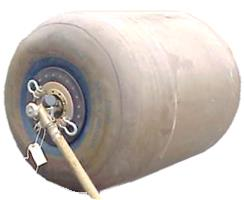
Any painting technology invariably requires the use of certain drugs to achieve the desired consistency of coatings. The question of whether there is a difference between a solvent and a diluent has become almost a rhetorical one. But the technology of painting is not a philosophy at all, and the improper use of a product to reduce the viscosity of coatings can ruin the entire painting cycle with high-quality materials. As a result, the master, not realizing his mistake, can cast a shadow of distrust at the supplier or manufacturer of the paintwork. With the solvent recyclers resource you can find the best choice.
What is the difference?
Modern acrylic solvents are added to paints to maintain the carrier base in a liquid state to prevent it from drying out coagulation until applied to the surface. Until a certain point, solvents are part of the base of the paint or varnish. When drying after application, the solvents evaporate, because they contain VOC Volatile Organic Compounds volatile organic compounds, as a result of which they do not remain in the paint layer. Solvents are also used to reduce the viscosity of the paint in cases designed for this. If coatings are made on a water-soluble or other basis that does not require the use of solvents, thinners are used to dilute and give the coatings the necessary consistency. Solvents and diluents have different chemical properties and composition. The essence of their action lies in their names: solvents aggressively dissolve particles of base coatings, and diluents only dilute it to the desired state.
A solvent is a liquid consisting of one or more components, which is capable of dissolving a binder in the absence of a chemical reaction. Most solvents are hydrocarbon organic volatile liquids, flammable and explosive.

Thinners materials intended for dilution viscosity reduction of coatings. A professional approach assumes that when applying coatings in various conditions and when using different paint materials, different brands of diluents will be used that are most suitable for the desired situation.
Thinners, unlike solvents, do not have a dissolving power and serve to reduce the viscosity of thick-grated paints or to dilute dry mineral pigment paints. Various emulsions are used as diluents and no alcohols are used at all.
Chemistry and Ecology
The composition of any solvent includes those or other aggressive alcohols, oil distillates, etc., which should be used for certain types of coatings. Nitro solvents are used for nitro-paint, acrylic thinners are used for acrylic paint, and appropriate thinners are used for MS, HS varnish. The VOC volatiles included in the vast majority of coatings are harmful to the environment and humans, which is why the EU has tightened its legislation. Directive act restrict the use of harmful solvents as part of paints and varnishes for automobile enterprises. Thus, according to Euro norms, painters are required to use a certain amount of solvent in their work for the year and use mainly paint and varnish harmless to humans and the environment. Therefore, in Western countries, water-based materials are gaining popularity and distribution: with a small up to 5% or with a complete lack of solvent. In this case, water-based diluents are used to achieve working viscosity, such as when using HS varnish. Modern water-soluble materials are certainly safer and more environmentally friendly, but they are also more expensive. Therefore, in the absence of legislative restrictions in post-Soviet countries, solvents are still in great demand.










